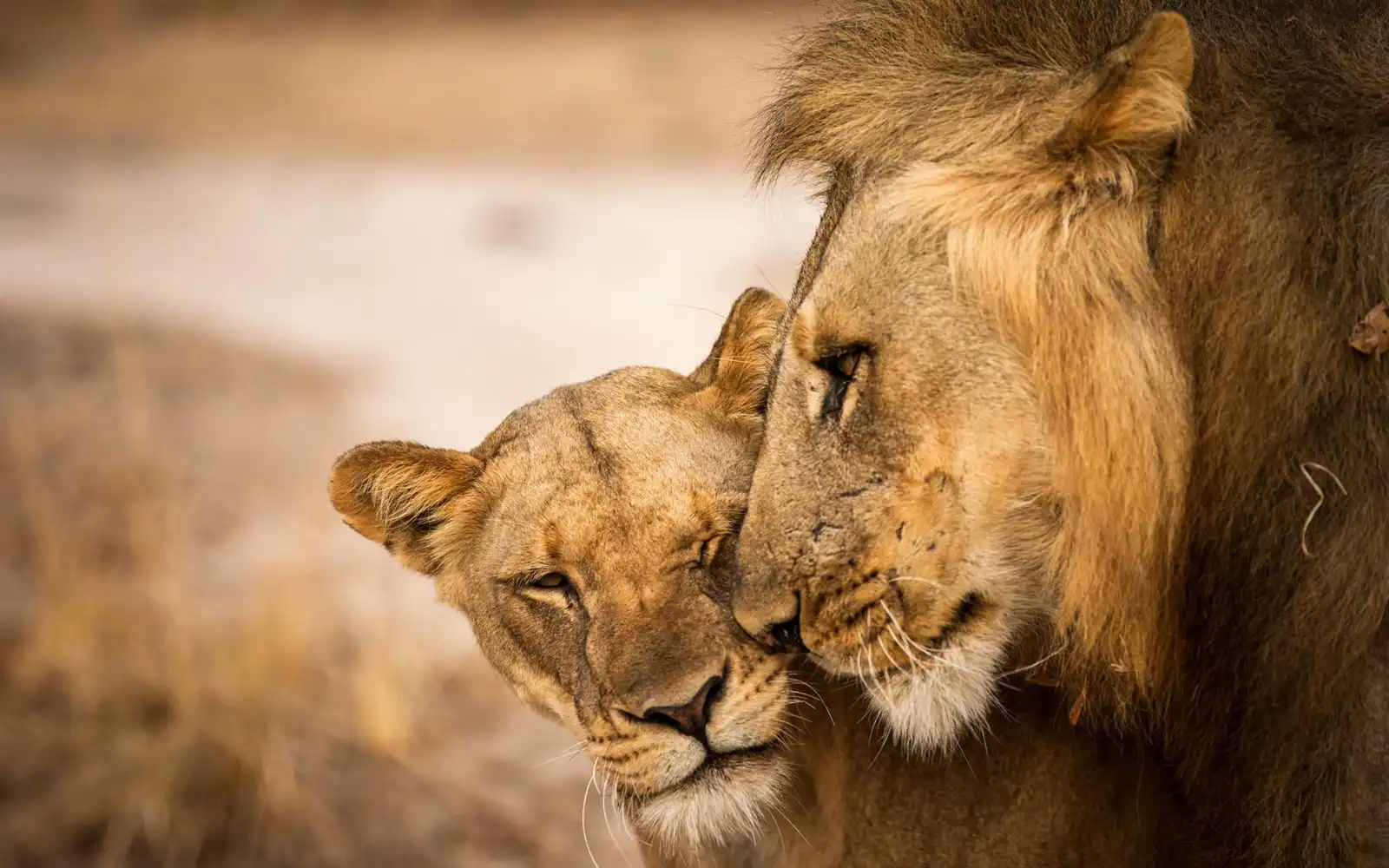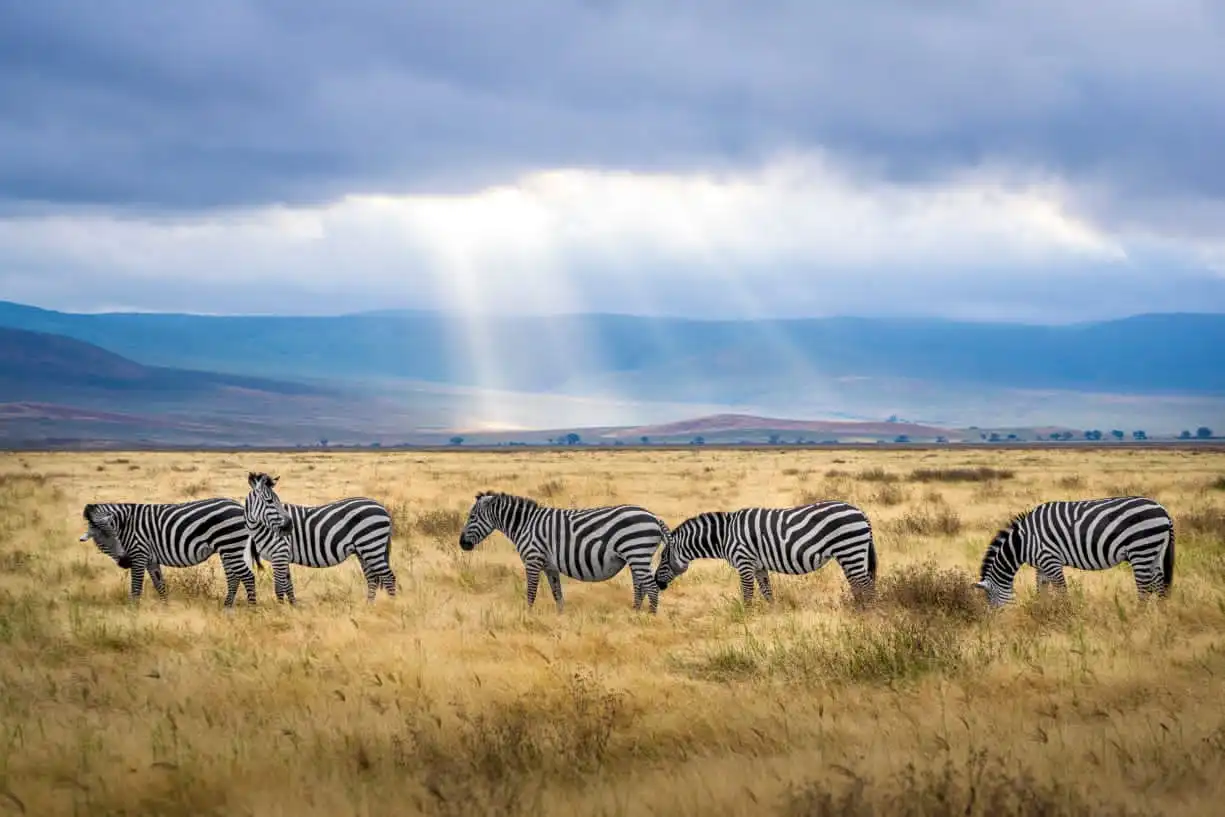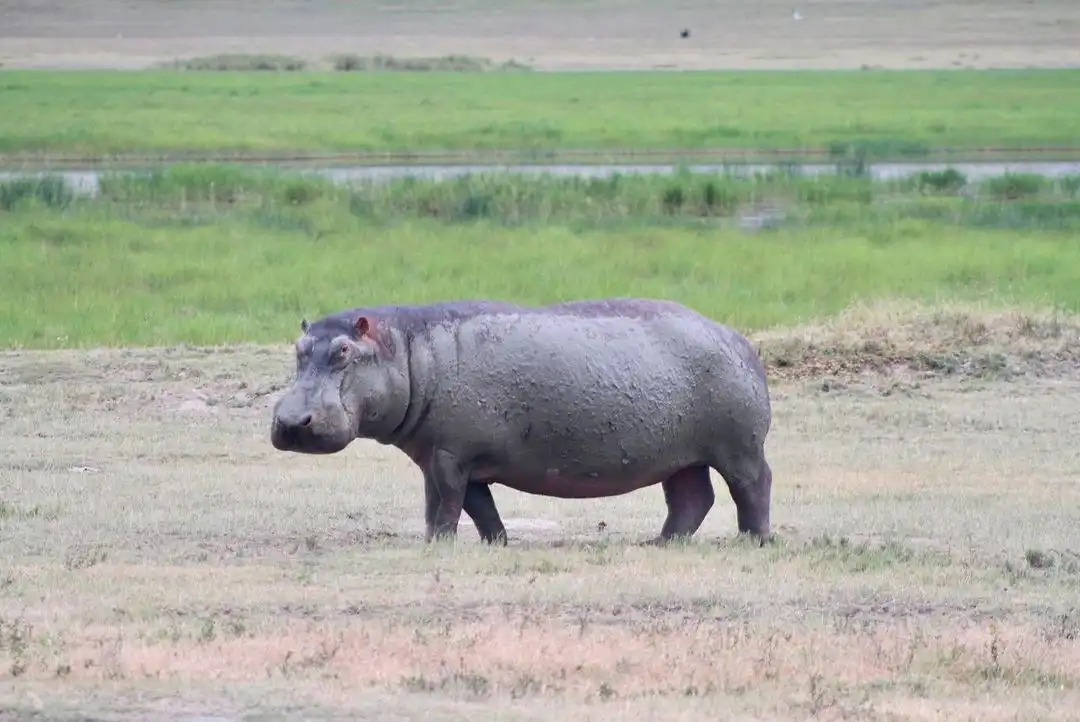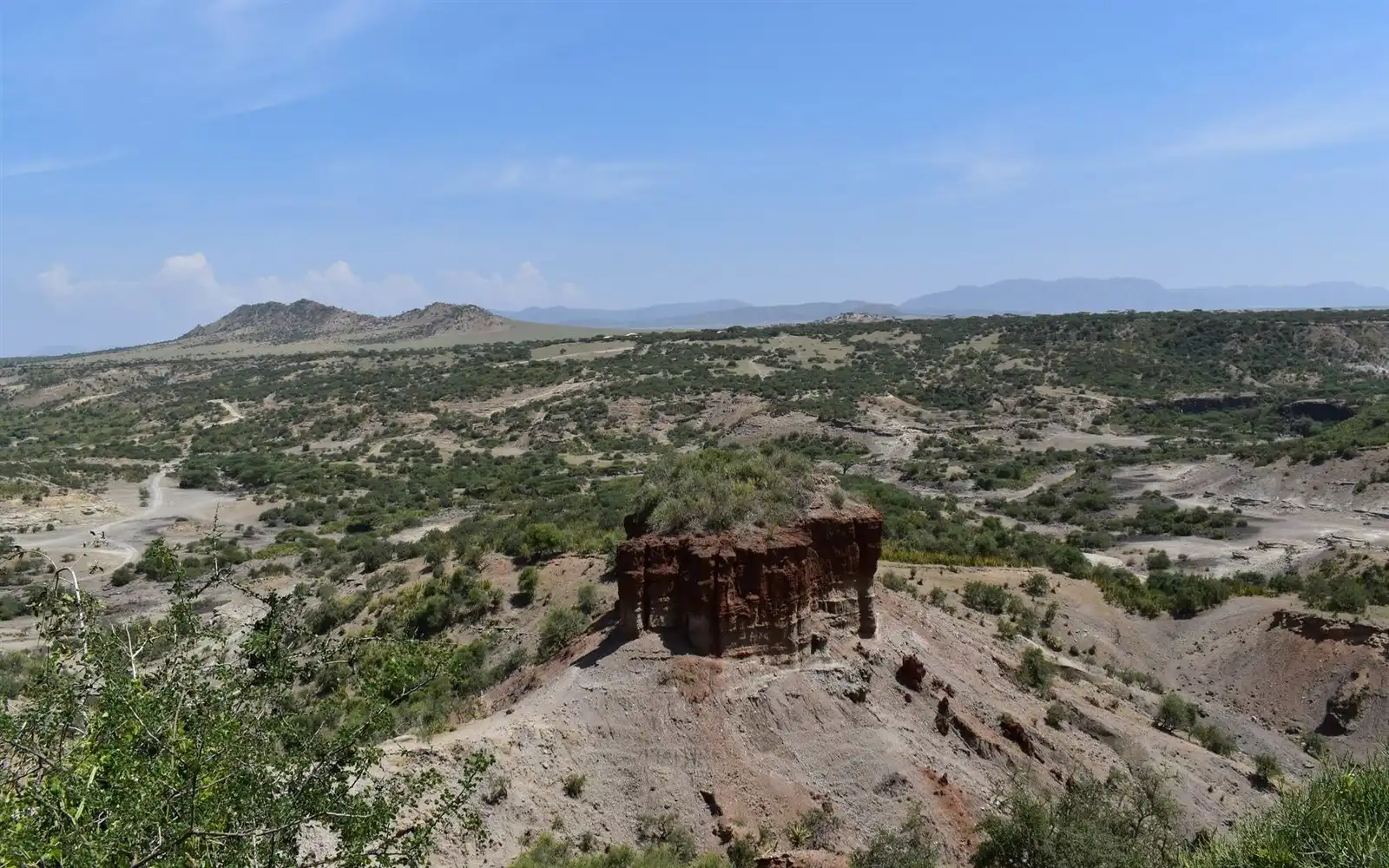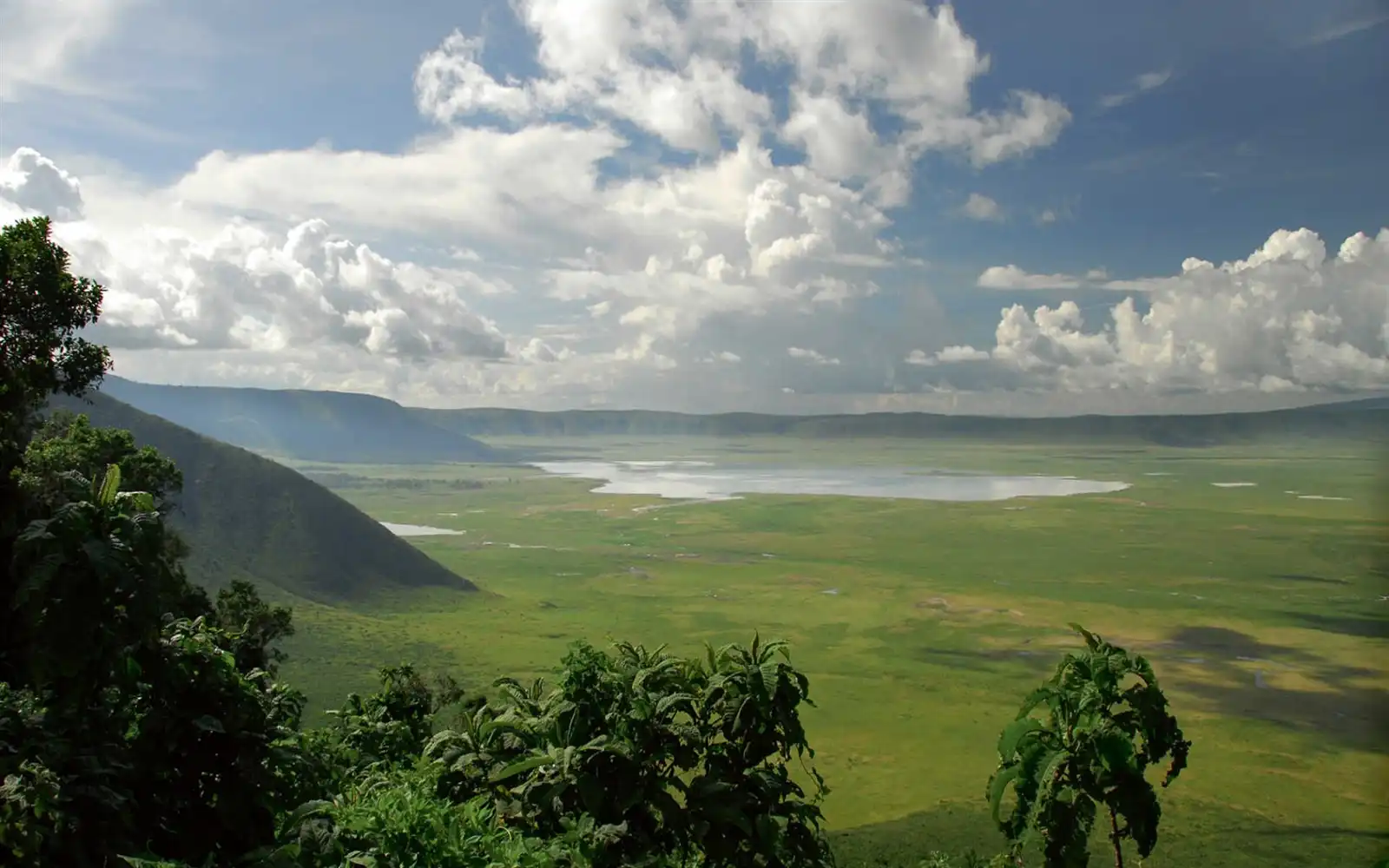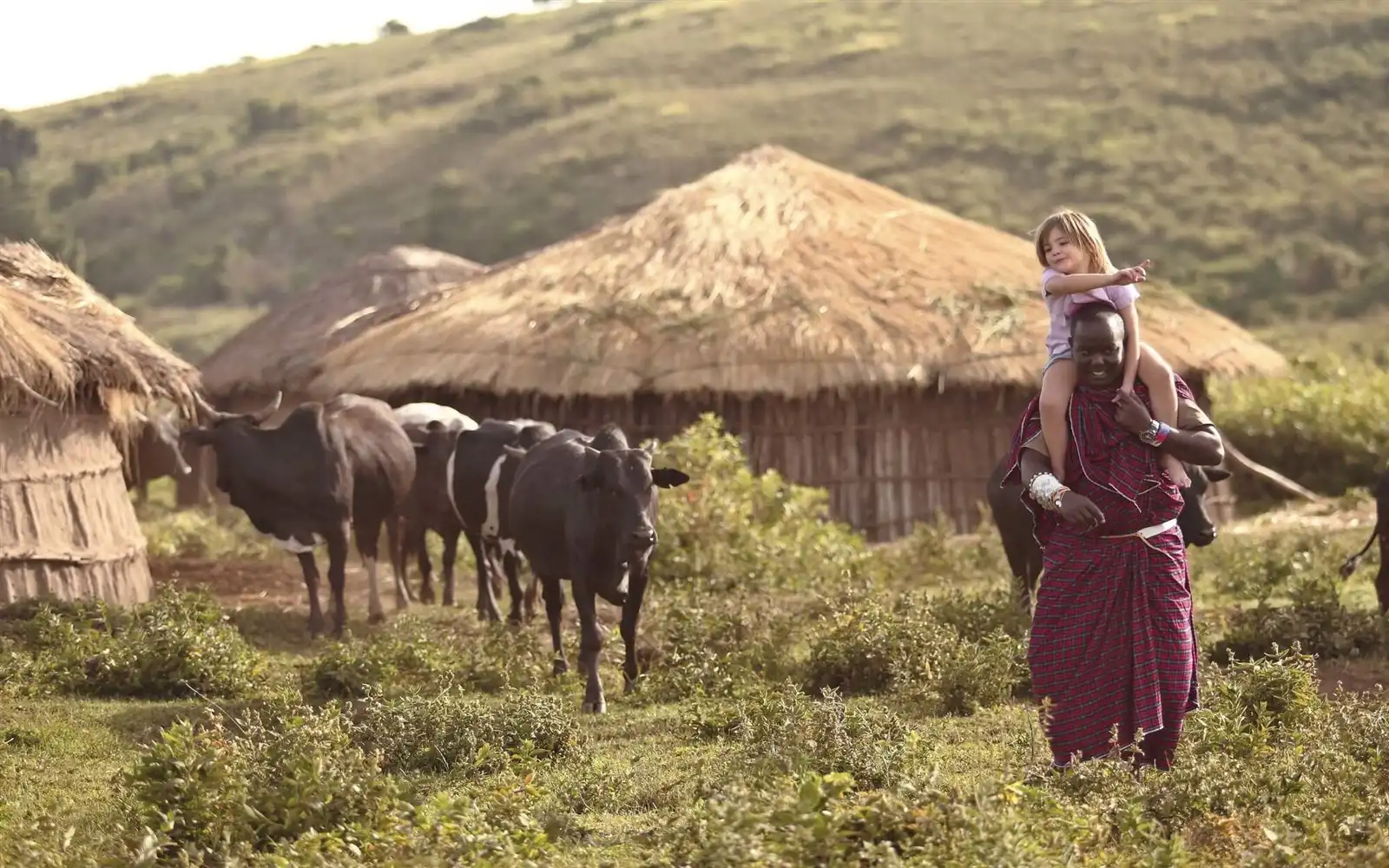Ngorongoro Crater & Conservation Area
Ngorongoro Conservation Area
The Ngorongoro Conservation Area is a protected area and a UNESCO World Heritage Site located in Ngorongoro District, 180 km (110 mi) west of Arusha City in Arusha Region, within the Crater Highlands geological area of northern Tanzania. The area is named after Ngorongoro Crater, a large volcanic caldera within the area.
The conservation area is administered by the Ngorongoro Conservation Area Authority, an arm of the Tanzanian government, and its boundaries follow the boundary of the Ngorongoro District in Arusha Region.
The western portion of the park abuts the Serengeti National Park (also a UNESCO World Heritage Site) , and the area comprising the two parks and Kenya's Maasai Mara game reserve is home to Great Migration, a massive annual migration of millions of wildebeest, zebras, gazelles, and other animals. The conservation area also contains Olduvai Gorge, one of the most important paleoanthropological sites in the world.
Ngorongoro Crater in Tanzania
The main feature of the Ngorongoro Conservation Authority is the Ngorongoro Crater, the world's largest inactive, intact and unfilled volcanic caldera. The crater, which formed when a large volcano exploded and collapsed on itself two to three million years ago, is 610 metres (2,000 feet) deep and its floor covers 260 square kilometres (100 square miles).
Estimates of the height of the original volcano range from 4,500 to 5,800 metres (14,800 to 19,000 feet) high. The crater floor is 1,800 metres (5,900 feet) above sea level. The crater was voted by Seven Natural Wonders as one of the Seven Natural Wonders of Africa in Arusha, Tanzania, in February 2013. The Ngorongoro volcano was active from about 2.45 to 2 million years ago.
The volcanic eruptions like that of Ngorongoro, which resulted in the formation of Ngorongoro Crater in Tanzania, were very common. Similar collapses occurred in the case of Olmoti and Empakaai, but they were much smaller in magnitude and impact. Out of the two recent volcanoes to the northeast of the Empakaai caldera, Kerimasi and Ol Doinyo Lengai, Doinyo Lengai is still active and had major eruptions in 2007 and 2008. Smaller ash eruptions and lava flows continue to slowly fill the current crater. Its name in Maasai means 'Mountain of God'.
Wildlife in Ngorongoro Crater
115 species of mammals have been recorded in the Ngorongoro Conservation Area. Aside from the crater, the two main areas for game viewing are the short grass plains west of the Gol Mountains, northwest of Ngorongoro Crater and around Lake Ndutu near the Serengeti National Park border. The two areas become feeding and breeding grounds for more than 2 million animals during the rainy season and support the great annual wildebeest migration that stretches across the Serengeti ecosystem.
From around December to May (depending on rainfall), more than a million wildebeest and thousands of zebra and gazelle migrate south to give birth in the short-grass plains around Ndutu, which stretch across the Range Area Conservancy and Serengeti National Park.
Elephant, pronghorn, bushbuck and endangered rhino are among the residents of the crater. There are also resident zebras and wildebeests in the crater that do not participate in the annual migration. Hippos are found in permanent freshwater tanks and the swamps in the crater. Other non-migratory herbivorous mammals found in the sanctuary include buffalo, antelope, warthog, kudu and other antelope species. Giraffes live around Lake Ndutu, Where acacia trees abound.
Carnivores in the Ngorongoro Conservation Area include lion, cheetah, hyena, leopard, jackal, serval cat and the endangered wild hunting dog. More than 550 bird species are registered in the sanctuary, some of which are resident and others are migratory. Lake Magadi is a salt lake on the crater floor, is often inhabited by thousands of Lesser Flamingos and other waterfowl. These birds can also be seen around Lake Ndutu and in Empakaai Crater Lake.
The Maasai at Ngorongoro Crater
Today, around 40,000 indigenous Maasai pastoralists live in the conservation area. Only the Maasai are granted permission to live on these lands.
Archaeological sites reveal that cattle-herding people have lived in the area for thousands of years, but the Maasai only arrived in this area 200 years ago. During the rains, these semi-nomads move out onto the open plain, while in the dry season they move their cattle up into the woodlands and mountains.
In order to understand more about their history and culture, you can visit the Maasai bomas (huts). One sits on the road to the Serengeti, the other is close to Sopa Lodge. This is a chance to learn more about the culture, take photos, and buy the famous Maasai beads.
It's well worth including a visit to a local Maasai community whilst at Ngorongoro. Many of the guides and rangers we work with were born and raised in the surrounding communities, and they have an infectious passion for the region and its history.
A wonderful morning or afternoon activity, you'll be invited into a Maasai boma and get an insight into the traditional cattle-herding practices.
Hiking in Ngorongoro Crater
The Ngorongoro Crater offers at least one day’s worth of safari, but those staying for more than a day or two can enjoy some hikes up the wall of the crater.
There are plenty of trekking opportunities up the rim of the crater, where you can enjoy panoramic views of the entire crater region, as far as the OI Doinyo Lengai volcano. On a clear day, you can even see Kilimanjaro and Lake Natron.
In the southern highlands of the crater you can hike Mount Lemagurut, which reaches 3,147 metres. The climb is difficult, so you will need a decent level of fitness. The climb will take all day and start just after breakfast. At the summit, you're rewarded with spectacular views of the Serengeti plains, the Ngorongoro Crater, and Lake Eyasi.
When to visit the Ngorongoro Crater
The best time to visit the Ngorongoro Conservation area is from June to February if you are coming for the Great Migration. Wildlife lives at the crater year-round, which means you can visit at any time of year and still get great game viewing.
March and April see the worst of the rains, so the crater is less busy during these months. One benefit of visiting during the wet season is that the landscapes are beautiful, but wildlife viewing is not as good. The peak season is July to September, and this corresponds with the best wildlife viewing.
If you are keener on seeing the predators in action, go in January or February when there is a hiatus in the annual rains and the wildebeest calve.
Due to a large number of vehicles during the high season, some prefer to travel to the crater in the low season. This is still a pleasant experience because the water levels in Lake Magadi (in the centre of the crater) results in higher concentrations of flamingos. Plus, most of the predators stay in the basin year round – there are still plenty of animals for them to hunt. The only thing you will miss is the Great Migration, and of course you should be prepared for some rains if travelling in the quieter months!
